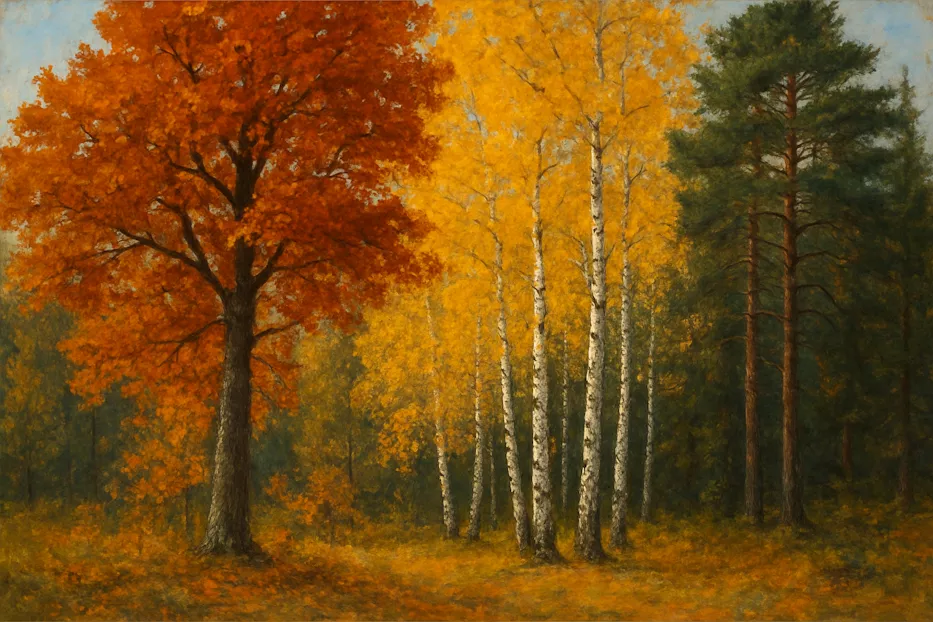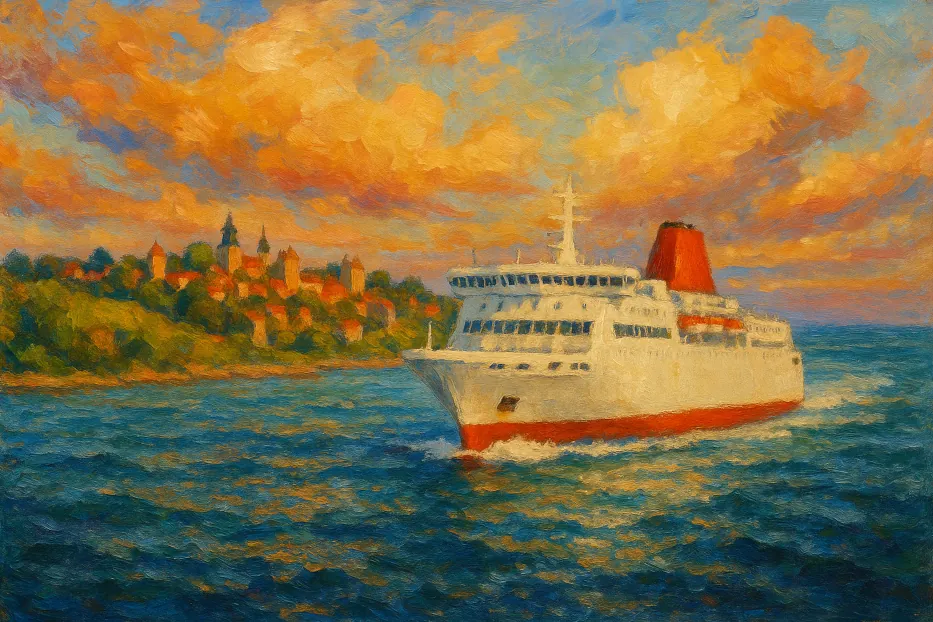Autumn on Gotland unfolds slowly, like a long breath drawn between light and silence.
From the last warmth of August to the first frost of November, Sweden’s great Baltic island turns from brilliance to calm. Fields fade to gold, forests deepen in color, and the sea shifts mood with the changing light. This is Gotland’s autumn — a season of reflection, quiet abundance, and gradual transformation.
Table of Contents
The Rhythm of the Season
Set in the Baltic Sea, about ninety kilometers east of mainland Sweden, Gotland is surrounded by open water and scattered smaller islands — Fårö, Gotska Sandön, and the Karlsö isles. The surrounding sea shapes its rhythm. The climate here is maritime, softening the extremes of the Swedish year.
Autumn arrives gently. September holds on to warmth, with average daytime temperatures between 13 and 15°C, and the air still carrying the memory of summer. By October, the days shorten and the winds grow heavier, bringing the scent of seaweed and wet limestone. Frost rarely touches the island before late October, and even then, it seldom stays long. Snow may fall briefly in November, but the sea’s mildness ensures it quickly melts away.
Gotland’s autumn, unlike the swift change of the mainland, is long and lingering — a slow passage from light into rest.
Trees and Vegetation
The island’s vegetation reflects its foundation: a bedrock of ancient coral limestone, thinly covered by calcareous soil. This creates an ecosystem unlike any other in Sweden: dry, open, and perfumed with juniper and wild herbs.
In the mixed forests of Lojsta, Hejde, and Etelhem, oak (Quercus robur), birch (Betula pendula), and Scots pine (Pinus sylvestris) form the main canopy. The oaks turn to deep bronze in late autumn; the birches shimmer in clear yellow before their leaves fall in gentle showers. The pines remain evergreen, their dark needles a contrast to the fading light.
In the richer soils of the south and sheltered inland valleys, beech (Fagus sylvatica) appears — not widespread, but present in quiet groves where the air is still. Their leaves turn copper and russet, glowing in the low afternoon sun. Rowans (Sorbus aucuparia) brighten the hedgerows and roadsides with clusters of red berries, a welcome resource for birds through the colder weeks.
Toward the coast and across the island’s famous alvar plains, the trees thin into scrub. Juniper (Juniperus communis) dominates these dry, stony expanses, forming dense, aromatic thickets. Their blue-green tones and silvery berries mark the season as clearly as the falling leaves inland. Mosses and lichens spread across stone walls and fallen trunks, thriving in the damp, salty air.
The Alvar in Autumn
The alvar landscape — flat, rocky, and wind-scoured — is one of Gotland’s defining features. Its thin soil and limestone base create conditions harsh yet full of subtle life.
After the heat of summer, autumn rains bring a quiet renewal. Grasses and low herbs regain color. Small flowers such as harebell (Campanula rotundifolia) and wild thyme (Thymus serpyllum) persist into October, their color vivid against the pale stone. In shaded places, fungi emerge — puffballs, milk caps, and the prized Gotland truffle (Tuber aestivum) beneath oak and hazel roots.
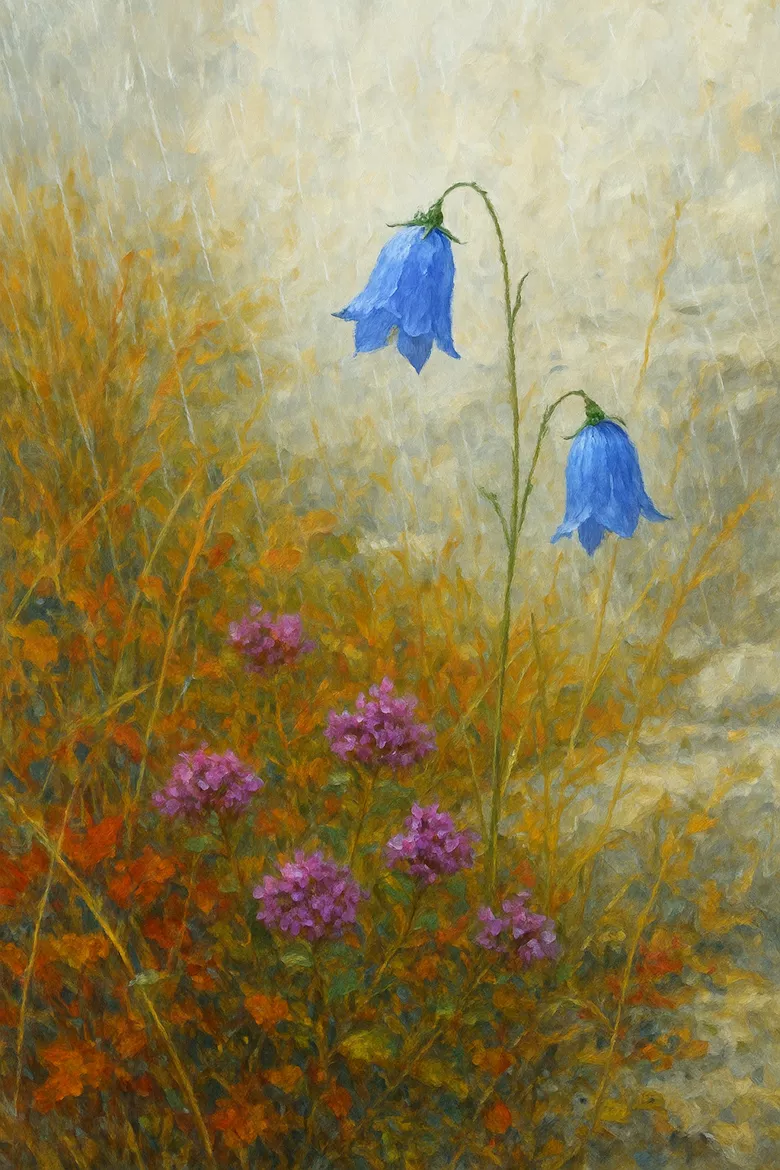
The alvar is also home to the last hum of insects before the cold sets in. Bumblebees, beetles, and butterflies linger on sunny afternoons. Above them, buzzards and kestrels circle, their shadows gliding over the thin grass. The wind is constant here, carrying the scent of juniper and distant sea.
The Coastline and the Sea
Gotland’s coastline, stretching more than 800 kilometers, defines its character as much as its interior. The sea is never far, and in autumn, it becomes the island’s most expressive feature.
In early autumn, the Baltic Sea still holds summer’s warmth. It gleams turquoise under bright skies. By October, it deepens to steel grey, and waves beat against the limestone cliffs of Högklint, Fårö, and Ljugarn. The rocks shift color with the light — rose-gold in the sun, silver-grey in shadow. After rain, they darken to a deep mineral tone, glistening with moisture.
This is also the height of migration. Gotland lies along one of Northern Europe’s great bird flyways. From September to November, the skies fill with life: greylag geese, barnacle geese, cranes, and whooper swans, all heading south. The air hums with their calls, echoing over the wetlands of Tingstäde träsk and Ajke myr, where thousands stop to rest.
Along the shorelines, sandpipers, plovers, and dunlins feed among the rocks. Cormorants stretch their wings on stones; eiders ride the surf in close-knit groups; gulls and terns patrol the shallows. High above, a white-tailed eagle may drift in slow circles, scanning the water — the emblem of Gotland’s enduring wildness.
Forest Life
Inland, the forests grow still and resonant with autumn scent — pine resin, damp earth, and decaying leaves. The ground is soft with moss, and mushrooms rise in every shaded corner: chanterelles, porcini, and hedgehog mushrooms, golden and pale against the soil.
Roe deer (Capreolus capreolus) graze in the twilight, their coats thickening from summer red to winter grey. European hares hide among the stubble fields, motionless as stone. Red foxes prowl along the forest edge, silent and quick. Hedgehogs feed busily before curling into hibernation under brush and leaves.
The birds grow quieter but not silent. Robins sing their thin, wistful melodies; great tits and nuthatches call from the branches; woodpeckers drum faintly on hollow trunks. As evening deepens, the soft hoot of a tawny owl carries over the fields, marking the season’s slow descent into rest.
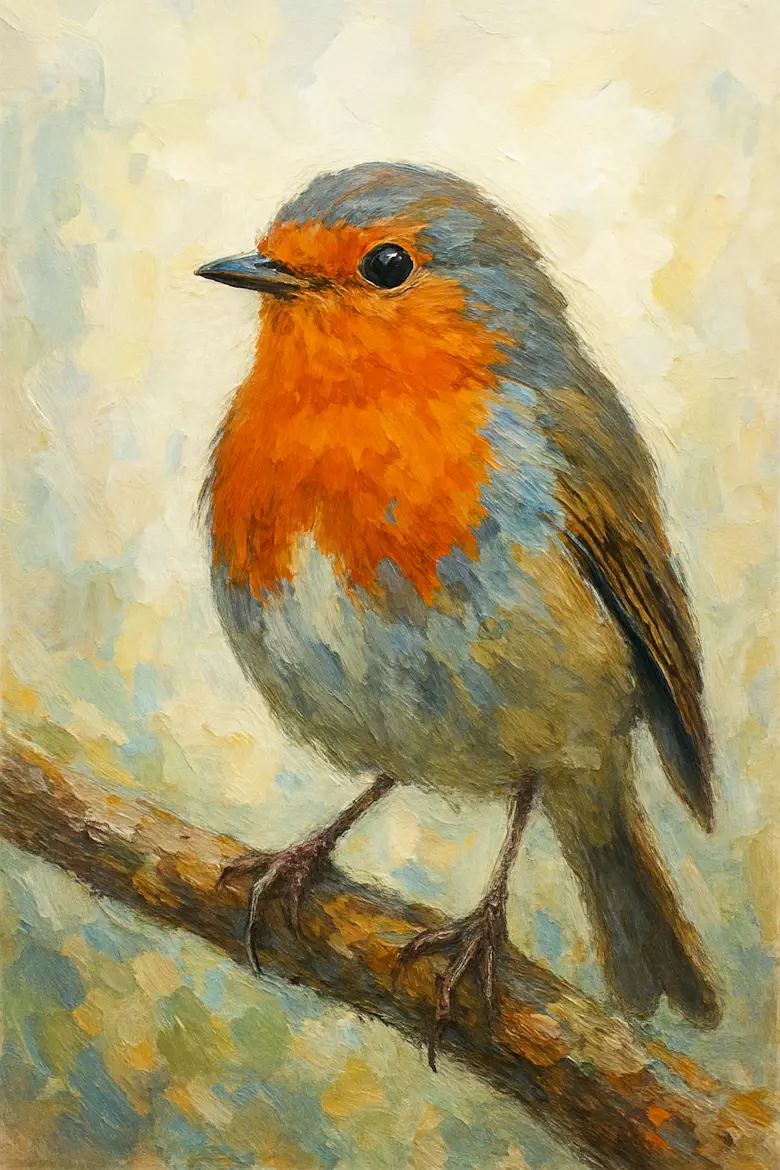
Light and Air
Perhaps the most distinct quality of autumn on Gotland is its light. Because the island is built of pale limestone and surrounded by water, sunlight scatters and reflects in unusual ways. Even on overcast days, the air seems luminous.
In September, the light is clear and sharp, revealing every fissure of rock and every grain of sand. By October, it lowers and warms, turning the landscape to honey and bronze. Morning mists lie across the meadows, softening everything into greys and silvers. When the sun burns through, dew flashes on cobwebs and grass blades, and the island gleams like new.
In November, the light cools to a quiet blue-grey. Frost appears on the alvar at dawn, and the wind from the Baltic gains an edge. Yet even then, the land glows faintly — a steady, subdued brightness that defines Gotland’s autumn landscape and draws artists year after year.
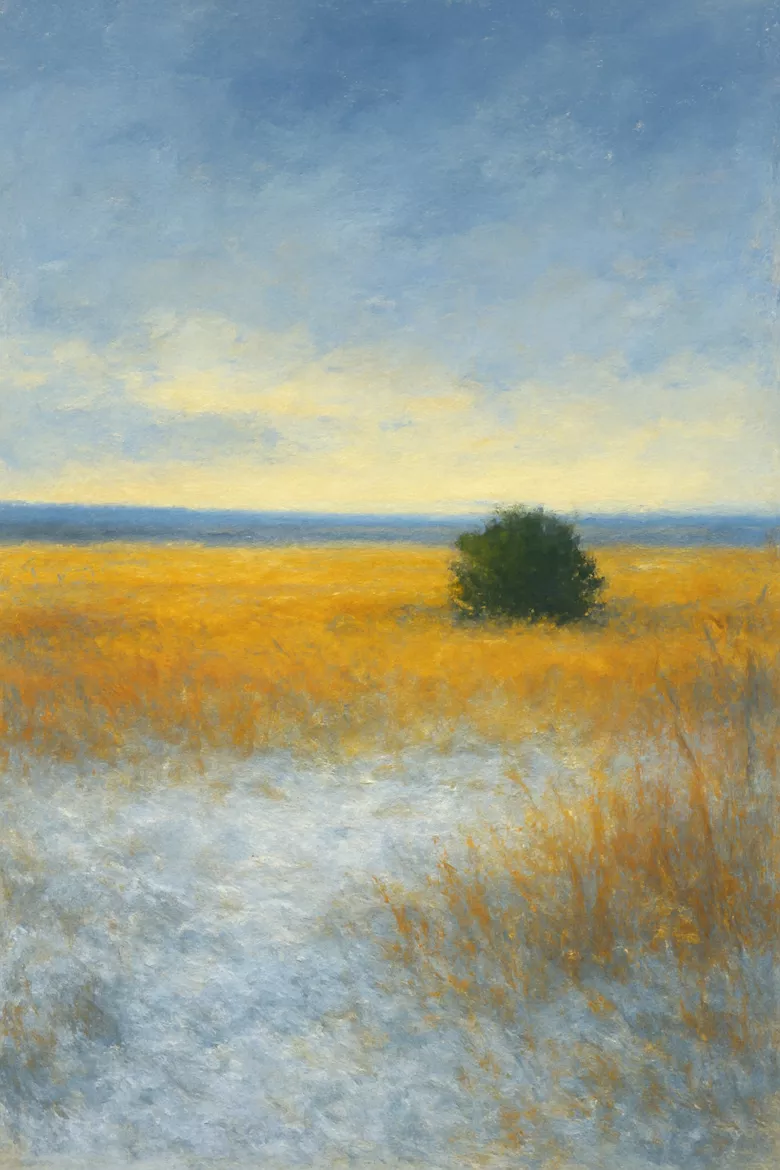
Ecology in Transition
Autumn is not an end here; it is a reorganization of energy. Beneath the soil, roots draw in nutrients for winter. Insects take shelter under bark and stones. Amphibians retreat into mud. Fish move toward deeper, more stable water as temperatures fall.
In the wetlands, ducks, swans, and geese feed voraciously before continuing their journey south, while others — eiders, mute swans, and gulls — stay to overwinter in the island’s ice-free bays. Beneath the waves, eelgrass meadows (Zostera marina) continue to photosynthesize, sustaining marine life even through the darkest months.
The island’s ecosystems slow but do not sleep. The alvar, forests, and coasts remain quietly active beneath the stillness, their life folded deep but unbroken.
Weather and Mood
Gotland’s autumn weather shifts daily. September is often mild and bright, ideal for harvest and long walks. October brings stronger winds and passing showers that leave the air clear and scented with sea salt. November can bring fog and fleeting snow, but the sea keeps the frost at bay.
The skies are endlessly expressive: cloud layers form and dissolve, letting sunlight break through in sudden beams that gild the fields and stone walls. Rainbows are common, sometimes double, arching from one horizon to the other. Even under clouds, the light is soft and even, giving every color — gold, grey, and green — a quiet depth.
Between Seasons
By late autumn, the transformation is complete. The birches stand bare and white against the sky; the oaks hold a few rusted leaves that rattle in the wind. The alvar lies pale and silent, edged with frost. Only the junipers and pines remain green, their resinous scent clean and sharp in the cold air.
The Gotland landscape becomes minimal, its beauty pared down to form and light — limestone, sea, and sky in perfect balance. The soundscape narrows to the sea’s steady rhythm and the whisper of wind through dry grass. Life has withdrawn underground or southward, but the island feels far from empty. It waits, patient and self-contained, for the slow renewal of spring.
Autumn on Gotland is not an ending. It is a pause — a long, deliberate stillness before the quiet brightness of winter. Its beauty lies in the muted colors, the birds crossing the pale sky, and the deep calm that follows the rush of summer.
Here, among limestone, wind, and water, autumn feels both fleeting and eternal — the timeless breathing of an island that has watched the same soft transformations for thousands of years.

